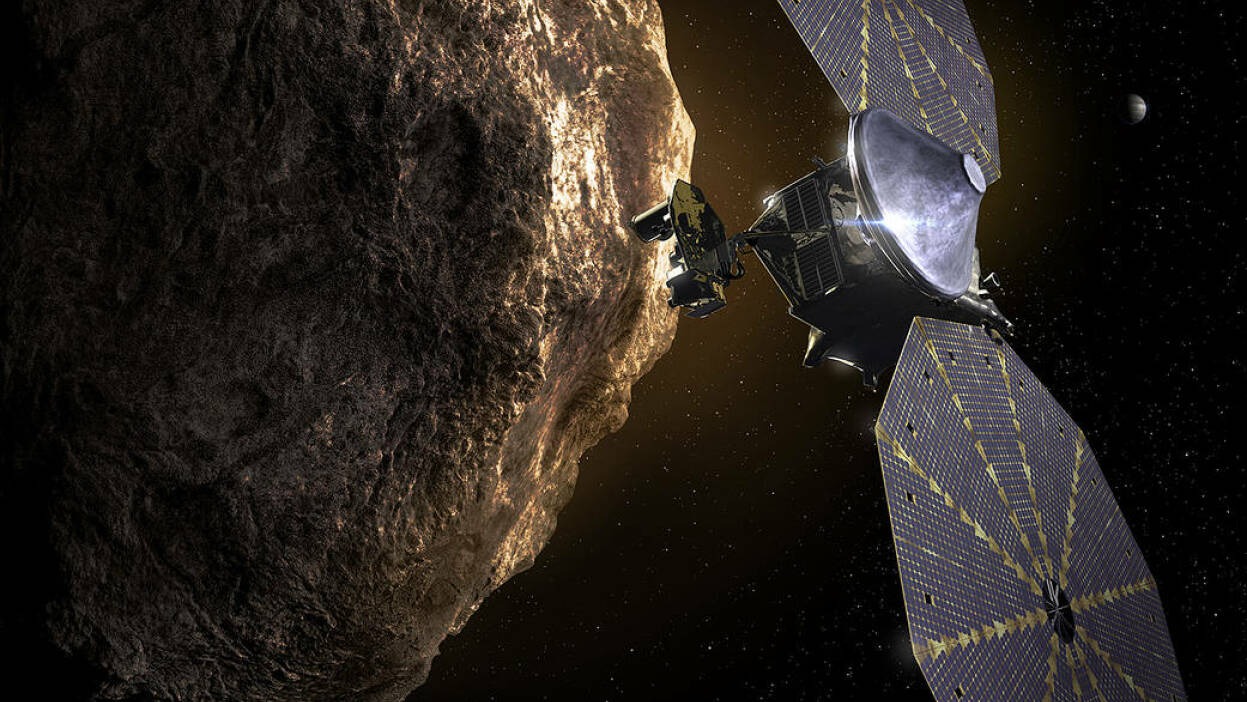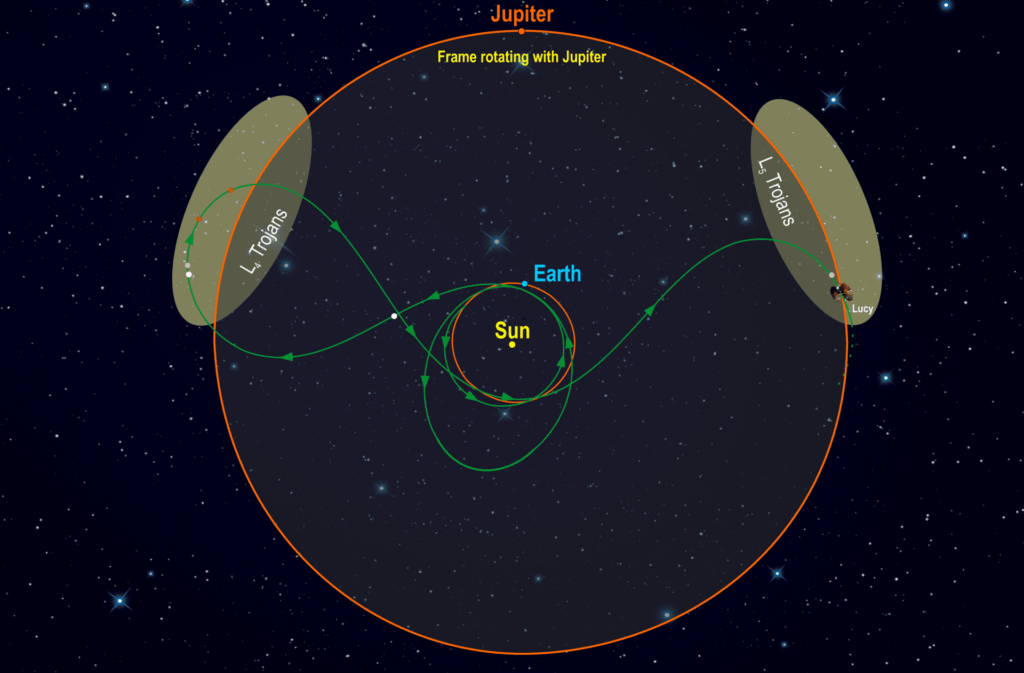Two swarms of various space rocks, called Trojan asteroids, constantly travel around the Sun at Lagrange points L4 and L5: one ahead of the gas giant Jupiter, and the other behind. The gravity of the Sun and Jupiter actually “locked” the Trojans in this unchanging orbit. This is the main reason why Trojan asteroids will never crash to Earth. This means that we have no samples of these distant, still largely mysterious objects.
But planetary scientists are wildly interested in the history of Trojans. They suspect that these icy rocks are ancient relics from the formation of our Solar System about 4 billion years ago. If so, then Trojans are the building blocks of planets. They can help us tell how the Earth and other planets came into being.

“To learn about the early period of the Earth’s formation, we need to study these ancient space objects,” said planetary scientist Hal Levison, who heads the unprecedented Trojan exploration mission.

Lucy’s Mission
The mission, named Lucy after the ancient remains of a fossilized human skeleton, will visit six different Trojan asteroids during its 12-year mission. It was launched in 2021. The spacecraft will not take samples, but will fly near asteroids. In total, the mission will closely observe the rocks with the help of many cameras.

Lucy’s powerful cameras, including a spectrometer, will help to see what asteroids are made of, and will observe the composition, mass and geological history of rocks. Planetary scientists already know that some of them have a dark red color and resemble some of the extremely distant objects discovered today at the back of the Solar System, beyond Neptune.
Mysteries of the Trojans
Lucy will help solve the mystery of how the primordial rocks of our early Solar System ended up in a gravitational trap around Jupiter. The leading theory is this: in the nascent Solar System, Jupiter, Saturn, Neptune and Uranus were closer to the Sun than they are now. Meanwhile, smaller icy objects — Trojans — have formed outside the planets in the outer spheres of our Solar System.
But about 880 million years after the formation of the Solar System, it underwent dramatic changes for reasons that have not yet been studied. According to Levison, the orbits of large planets have become extremely unstable, and they have moved away from the Sun. This made it possible for the Trojans to get closer to the gravitationally strong Jupiter. Since then, they have been circling Jupiter in packs. It is believed that they represent the untouched remnants of the Solar System that appeared billions of years ago. And that’s what makes them so valuable.
Earlier, the Lucy probe captured a lunar eclipse from a distance of 100 million km.
According to Mashable
Follow us on Twitter to get the most interesting space news in time
https://twitter.com/ust_magazine
